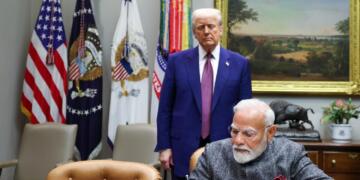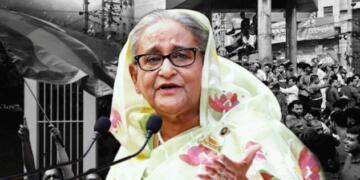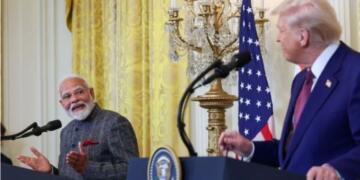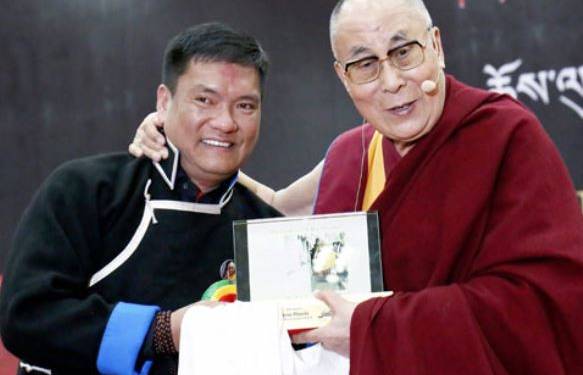Amid the border conflict in Eastern Ladakh’s Galwan valley, the Arunachal Pradesh Chief Minister Pema Khandu has taken the fight to the Chinese by using the same tactics China uses to lay claims over a foreign sovereign territory. On Wednesday, Pema Khandu in a tweet referred to the Line of Actual Control(LAC) as ‘Indo-Tibet border’ while speaking about the valour of jawans.
“The valour of Indian Army is what we counted ever since our Indepence. Had an opportunity to interact with the brave jawans today at Bumla post on Indo-Tibet border. Their josh is at highest level. We are in safe hands when it comes to our borders ..!!” tweeted the BJP leader.
The valour of Indian Army is what we counted ever since our Indepence. Had an opportunity to interact with the brave jawans today at Bumla post on Indo-Tibet border.
Their josh is at highest level. We are in safe hands when it comes to our borders ..!! pic.twitter.com/kwg5Uyx3MB— Pema Khandu པདྨ་མཁའ་འགྲོ་། (Modi Ka Parivar) (@PemaKhanduBJP) June 24, 2020
China claims the north-eastern Indian state of Arunachal Pradesh as part of southern Tibet and therefore when the state Chief Minister bats on the front foot and casually sidesteps China’s existence in the region, it sends a strong message.
The theatrics have a major role to play in diplomacy and Khandu has been doing it efficiently. It should also be seen that Khandu’s statement naturally comes at the behest of the Union government which has become aggressive in its foreign policies with China.
The Galwan valley incident was a paradigm shift in India’s foreign policy. When China refused to remove the illegal structures in the region, the Indian forces took matters in their own hand and gave China a black eye.
Since the Galwan valley incident, China has been pushed on the back foot and is back to its charade of scare-mongering tactics by using its propaganda mouthpieces.
Tibet—annexed by China
China had annexed Tibet in 1950-51 and over the years has been involved in numerous human rights violations in the region. Reportedly, around 1 lakh Tibetans are living in exile in India including the Dalai lama and its government.
Prasar Bharati the state-run public broadcaster last week had posted a tweet urging people to listen to the Tibetan World Service offered by All India Radio (AIR). This program by AIR offers authentic news and programs from Tibet.
Listen to All India Radio's Tibetan World Service for authentic news and programmes for and from Tibet. @AkashvaniAIR pic.twitter.com/JMFp8wypKo
— Prasar Bharati प्रसार भारती (@prasarbharati) June 17, 2020
Listen to All India Radio's Tibetan World Service for authentic news and programmes for and from Tibet. @AkashvaniAIR pic.twitter.com/JMFp8wypKo
— Prasar Bharati प्रसार भारती (@prasarbharati) June 17, 2020
India is still following in the footsteps of Nehru’s India and does not recognize Tibet as an independent country. But these measures are being seen as a precursor to India’s changing foreign policy which has been expedited by the loss of 20 Bravehearts of the Indian soil.
Aggressive foreign policy—the need of the hour
India needs to shed the garb of neutrality and be a bit more courageous in its foreign policies, especially concerning China. Only accepting Dalai Lama and giving him an asylum will not give justice to the Tibetans. There is enough historical evidence to prove that Tibet has always been an independent country.
On Monday India had issued a stern warning to China that it will reply to Chinese provocation and violence in kind and with interest during the second rounds of Lt General level talks.
Pema Khandu has set the precedent and every Indian while referring to Arunachal’s border should refer to it as Indo-Tibet border.































